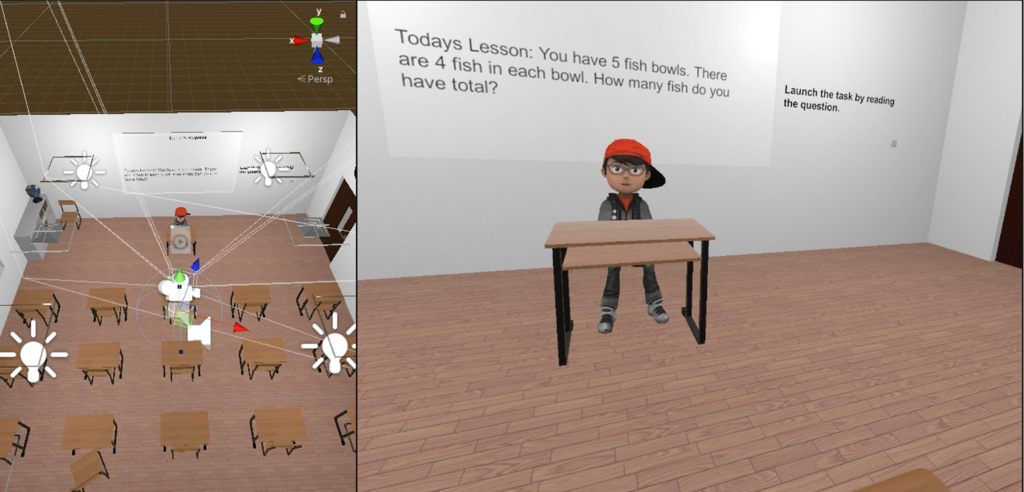
Most children in the U.S. struggle to learn mathematics, with 50 to 75% of students scoring below proficient on achievement tests in grades 4 through 12. Children with disabilities such as autism tend to fare even worse. Clearly, math teachers must be equipped to educate students who require varying levels of support—but, for the most part, they aren’t. Logistical issues inherent in conventional teacher-training and professional development programs contribute to the problem, say Seth King, Anne Estapa, and Tyler Bell—members of this summer’s Immersive Virtual Mathematics Education for Teachers interdisciplinary research grant. Teacher candidates are required to spend only a limited time student teaching (logging even fewer classroom hours during COVID-19)—and even when they are in the classroom, many situations relevant to teaching math do not reliably present themselves. In many cases, there aren’t enough opportunities for teachers to practice under the supervision of qualified personnel, particularly in rural areas.
As part of the Project VIME interdisciplinary research grant, King (Teaching & Learning), Estapa (Teaching & Learning), and Bell (Electrical & Computer Engineering) are developing a virtual reality simulation that will provide high-quality training to math teachers in evidence-based instructional strategies. The automated, virtual reality simulation will guide, correct, and assess teacher candidates, as well as provide repeated opportunities to practice instructional strategies across a variety of conditions resembling authentic interactions in the mathematics classroom.
Bell says that so far, the group has created a virtual classroom featuring a simulated student that verbally interacts with trainees: “Trainees have received instruction and feedback from the simulation, and initial results of experiments conducted over the summer suggest that the simulation has improved trainees’ acquisition of targeted skills.” The group will continue to refine the interface and prepare a larger experimental validation of the simulation in Spring 2022.
Project VIME is funded through a Laura Spelman Rockefeller Grant.